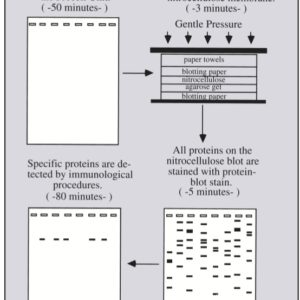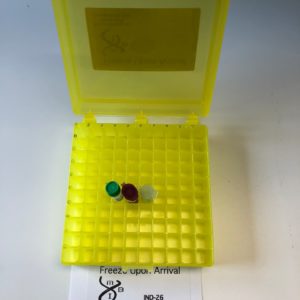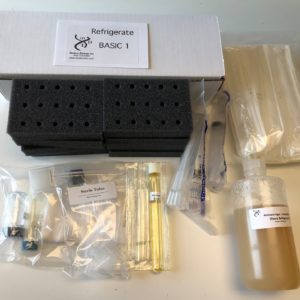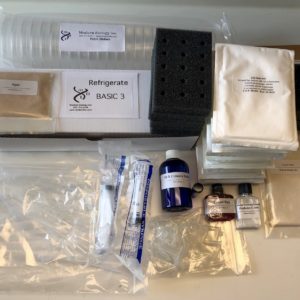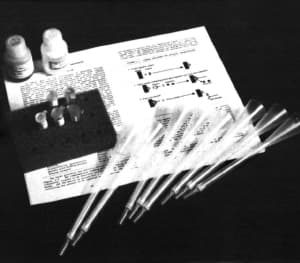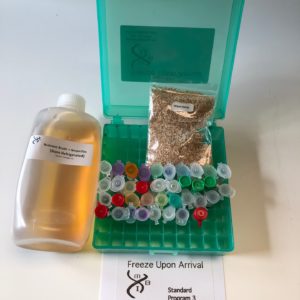Description
The analysis conducted in our laboratory exercises involves the use of specific DNA molecules. One of the key molecules is phage lambda, a bacteriophage that infects E. coli and is commonly used in genetic engineering for cloning. Phage lambda has unique properties and functions, and its genetic and restriction map is essential for our analysis. Another crucial component is plasmid pUC18, which serves as a cloning vector. It contains an ampicillin-resistance gene and possesses features such as a small size and unique restriction sites. Our cloning strategy involves ligating DNA fragments from phage lambda onto pUC18 to create recombinant plasmids, which are then analyzed through electrophoresis to identify specific cloned segments of the lambda genome.
Lab Session 1
During laboratory session 1, Lambda (λ) DNA is digested with the restriction enzyme EcoRI. This DNA digestion will be electrophoresed in Session 2 to recover fragments for cloning.
Lab Session 2
In this laboratory session, the digested and undigested Lambda (λ) DNA from Session 1 will be electrophoresed against a marker standard. The gel will then be stained to recover fragments for cloning in Lab Session 3.
Lab Session 3
In this Laboratory Session (it’s a shorter one!), you will select a DNA band to isolate from your gel and elute it (recover it from the gel) using the elutor mechanisms you built during your electrophoresis step in Lab Session 2. DNA will then be precipitated out of solution in the recovery tube and spun down. Once rehydrated, only the isolated DNA band will remain in solution.
Lab Session 4
In this Laboratory Session, you will Ligate the selected bands from Session 3 with a linear plasmid (pUC18 digested with EcoRI) to form a recombinant plasmid with an insert. The base plasmid – pUC18 – when taken into E. coli cells will produce blue colonies in this experiment, while plasmids with your selected insert will produce white colonies in the same plates.
Lab Session 5
The recombinant plasmid ligated in Laboratory Session 4 will be introduced into competent E. coli cells by transformation and colonies containing foreign DNA will be identified by a blue/white color selection assay.
Lab Sessions 6-7
In these laboratory sessions, you will electrophorese your ligated plasmid along with the original linear pUC18 segment, digested λ DNA, and DNA Markers to verify correct ligation and overall plasmid length. You will finish with the final analysis.
REVISIONS
S12 Instructor Manual – Revised 2023
S12 Student Manual
 Due to Customs restrictions, we only accept orders from educational institutions within the Continental United States, Alaska or Hawaii.
Due to Customs restrictions, we only accept orders from educational institutions within the Continental United States, Alaska or Hawaii. 
